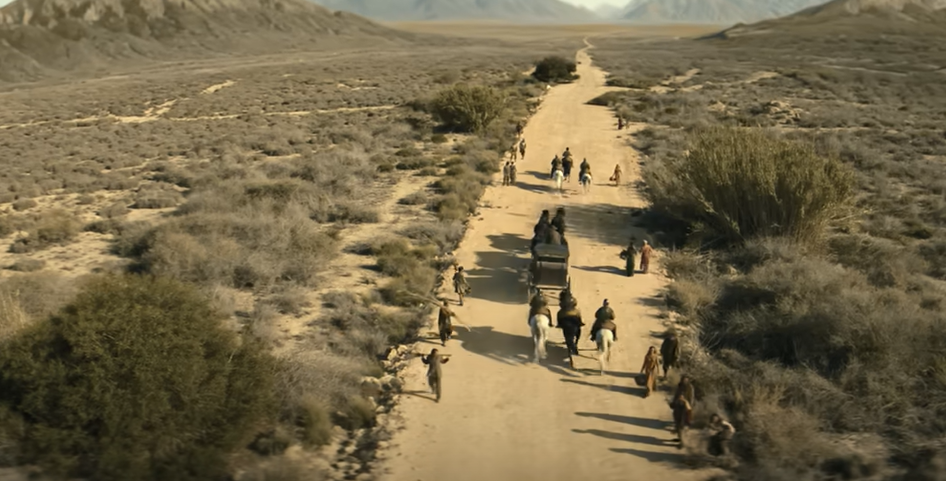In 2025, Netflix’s Néro the Assassin emerged as one of the most visually ambitious European dramas, both for its plot and its stunning landscapes. Each location carefully selected to reflect the raw power and moral tension of its 16th-century setting was used for filming the series, which took place in Southern France, Italy, and Spain. As though the stones themselves recall the steps of Néro, the tortured killer at its core, each frame feels both deeply rooted in history and remarkably alive.
A large portion of the show was filmed in Ventimiglia, a stunning coastal town in the Liguria region of Italy. This historic city, which is located close to the French border, gave the made-up town of Lamartine its dilapidated charm. Its Roman ruins, sunburned rooftops, and winding alleys gave the production an authenticity that didn’t need much digital work. The filmmakers’ use of the natural light from the Mediterranean was remarkably effective in bringing out the weariness of a land affected by drought and the texture of stone.
Production went on across the border in Southern France in the Provence and Occitanie regions, where the show’s opening scenes were set against a haunting backdrop of vineyards, dilapidated castles, and dry valleys. A man tries to hang himself against the glaring sun in the opening scene, which was shot close to the Camargue wetlands, which are characterized by their expansive plains and reflective salt flats. The place itself came to represent both hopelessness and rebirth, perfectly capturing Néro’s inner turmoil.
Néro the Assassin — Production & Key Details
| Category | Details |
|---|---|
| Title | Néro the Assassin |
| Genre | Historical Action Drama |
| Language | French |
| Director | Allan Mauduit |
| Writers | Jean-Patrick Benes, Allan Mauduit |
| Lead Cast | Pio Marmaï, Camille Razat, Alice Isaaz, Louis-Do de Lencquesaing |
| Country of Origin | France |
| Filming Period | Spring–Summer 2024 |
| Primary Filming Locations | South of France, Liguria (Italy), and regions of Spain |
| Production Companies | Bonne Nouvelle, Netflix France |
| Release Date | October 8, 2025 (Netflix) |
| IMDb Rating | 6.6/10 |
| Verified Reference | IMDb – https://www.imdb.com/title/tt32614583/ |

Filming also took place in remote Andalusian villages in Spain. Remarkably intact from the Renaissance, these towns served as perfect substitutes for monasteries and tiny religious communities. Their arched courtyards and ochre walls created a spooky yet intimate atmosphere. Later, cinematographer Julien Hirsch referred to these locations as “natural sets sculpted by time,” highlighting the team’s reliance on authentic landscapes as opposed to complex studio constructions.
The choice to shoot in three different nations was especially creative. From the unvarnished beauty of Italian coastlines to the stoic grace of French fortresses, it gave the creative team the opportunity to highlight the varied cultural textures of Renaissance Europe. The crew was able to replicate several historical settings in close proximity thanks to this cross-continental approach, which also proved to be very effective for logistics.
Practical realism was emphasized by director Allan Mauduit, who is renowned for his subtle visual storytelling. To make sure that every scene felt emotionally grounded, he steered clear of a lot of computer-generated imagery and instead used real-world settings. He took a very straightforward approach: the audience would believe that an actor’s costume was authentic if they could see the wear, feel the heat, and sense the dust.
The use of light to define moral ambiguity in the series’ cinematography is especially inventive. While scenes in the French countryside glow with golden hues, suggesting a brief redemption, scenes in Italy carry deep contrasts — cool blues and harsh shadows. The change in location subtly reflects the emotional journey of Néro and his daughter, Perla, as they escape both evil and religious forces.
Aveyron, a region in France known for its limestone cliffs and medieval bridges, was one of the most memorable locations for filming. The chase scenes have an almost mythic scale because the escape scenes through narrow valleys were filmed there. Centuries of erosion have sculpted these landscapes into living representations of perseverance and repercussion. Unsurprisingly, fans have already started going to these exact locations, transforming the filming sites into pilgrimage sites for moviegoers.
Production mostly occurred in the late spring and summer of 2024, according to Soap Central and What’s on Netflix. This timing was especially advantageous because it provided long daylight hours and rich natural tones that emphasized the visual depth of the show. In order to ensure that every frame could withstand close examination, set designers included historical detail down to the smallest artifact, from weathered iron gates to genuine fabrics sourced from Italian markets.
The way that Néro the Assassin’s visual style subtly references 1960s spaghetti westerns is what makes it so captivating. Though filtered through a French sensibility, the dusty towns, the deliberate pacing, and the moral ambiguity are reminiscent of Sergio Leone’s writing. A tactile rhythm is added to the experience even through its sound design, which includes reverberating footsteps, fluttering banners, and the subtle creak of leather.
Similarities to other European historical dramas, such as Marie Antoinette and Django, which both employed location filming to create intimacy within grandeur, were also revived by the series. However, Néro the Assassin takes a deeper approach. It employs geography as an emotional compass, with each setting signifying a phase of the protagonist’s transformation. Spain offers sanctuary tinged with sacrifice, Liguria exposes peril, and Provence offers seclusion.
